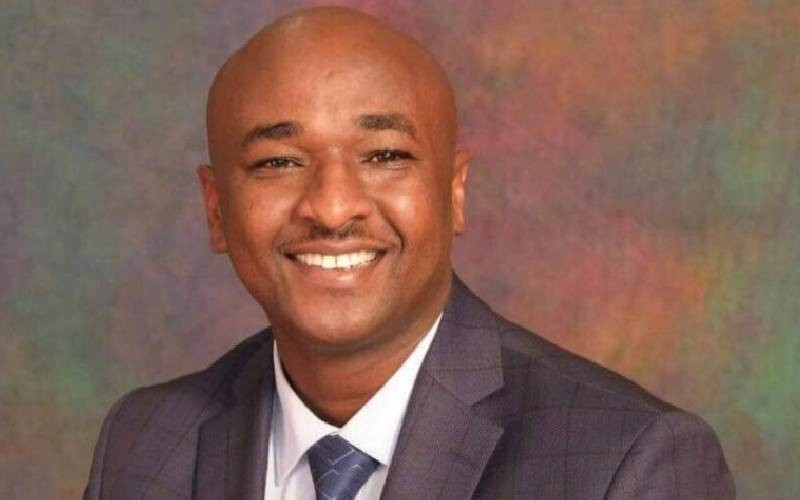Pneumonia claims about two million children under five each year, yet no new drug, vaccine or special diagnostic test is needed to save their lives," writes the Global Coalition against Child Pneumonia.
"The answers are at hand, and effective treatment is both inexpensive and widely available."
So, why does a child die every fifteen seconds of this disease? In Kenya, the toll is nearly 50,000, higher than that from diarrhoea, HIV, malaria and other illnesses. Why is this the case if cheap drugs and treatment exist?
This is a question citizens and Government must ask themselves as the world marks the first-ever World Pneumonia Day today. We may see the urgency or immediacy of other matters hold the media’s attention, but such matters as the sanctions proposed by the US or the fate of the Ministry of Finance austerity measures have little impact on the average citizen’s life.
The death rate for children under-five is about 120 children per 1,000 live births — giving a toll more than 50 times the road carnage rate nationally.
But there is usually more hue and cry about the latter as it is more ‘visible’. If that many adults were dying of a set of treatable or preventable illnesses, would it not be a national emergency? A look at the HIV and Aids death toll annualy answers that question. So why is it so different for children, some 40 per cent of who are the result of unplanned pregnancies?
Tale of inequality
It is time to make the fatalities among children, especially in the slums and rural areas, more visible to policymakers. A study that we quoted in these pages recently found that the national averages for childhood deaths hide a horrifying tale of inequality. Slum areas like Kibera, for instance, report a childhood death rate of 25 per cent, despite having access to some of the same medical facilities, as affluent neighbourhoods. Has the Health Ministry stopped to ask what other factors, besides access to a hospital, are at play?
Could it be levels of maternal education? Perhaps an obsession with protection from "more dangerous" illnesses? Malaria, tuberculosis, and HIV and Aids get the majority of attention and funding for major health threats. This has great value, no doubt, as well as results. (Today, we report that a viable malaria vaccine is within reach after close to 20 years of research.) But success in the fight against these diseases means ‘neglected’ illnesses are quietly gaining prominence as threats.
About one in ten children who die before their fifth birthday do so from malaria. Almost twice as many succumb to pneumonia. If the deaths from diarrhoeal disea-ses are thrown in, malaria slides to third position. Neonatal causes trump all the above, killing one in four children. These are dangers we can ill afford to ignore.
With pneumonia, there are no vaccines to research, no puzzles to unlock. All we need is action.Pneumonia is mistaken for malaria by doctors in places without laboratories that can test for the parasite. What is the likelihood of doctors conditioned to respond to the ‘greater’ threat of malaria misdiagnosing most children under five, and thus contributing to the vast proportion of those dying. Or of parents who saw drugs prescribed for malaria over a set of symptoms, self-diagnosing the children and making the error?
As pneumonia and diarrhoeal diseases kill so many people, it is clear there should be, alongside the much-vaunted malaria campaigns, similar large-scale, well-funded interventions.
Leading killer
This is important given there is little proof that malaria interventions have achieved the successes they are said to. The latest World Malaria Report said that in most nations, "the links between interventions (like net distribution) and trends are ambiguous". This should suggest at least more diversity in the type of diseases and interventions donors throw the most money at.
Pneumonia is the developing world’s greatest killer of children. But it is entirely preventable and easily treatable. There can be no excuse for failing to reduce these needless deaths. If the Millennium Development Goals on child deaths are to be met, it will be in tackling pneumonia, diarrhoeal diseases and malaria.
Stay informed. Subscribe to our newsletter
 The Standard Group Plc is a
multi-media organization with investments in media platforms spanning newspaper
print operations, television, radio broadcasting, digital and online services. The
Standard Group is recognized as a leading multi-media house in Kenya with a key
influence in matters of national and international interest.
The Standard Group Plc is a
multi-media organization with investments in media platforms spanning newspaper
print operations, television, radio broadcasting, digital and online services. The
Standard Group is recognized as a leading multi-media house in Kenya with a key
influence in matters of national and international interest.
 The Standard Group Plc is a
multi-media organization with investments in media platforms spanning newspaper
print operations, television, radio broadcasting, digital and online services. The
Standard Group is recognized as a leading multi-media house in Kenya with a key
influence in matters of national and international interest.
The Standard Group Plc is a
multi-media organization with investments in media platforms spanning newspaper
print operations, television, radio broadcasting, digital and online services. The
Standard Group is recognized as a leading multi-media house in Kenya with a key
influence in matters of national and international interest.









